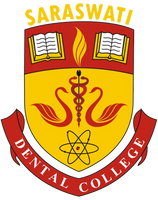
The vertebral column, also called the spinal column, spine, or backbone, in vertebrate animals is the flexible column extending from neck to tail, made of a series of bones, the vertebrae. In the human vertebral column, there are 33 vertebrae divided into cervical (C1-C7), thoracic (T1- T12), lumbar (L1-L5), sacral (S1-S5 fused), and coccyx (3-5 segments).
The spine is the axle bearing the load of the head, shoulders, and thorax. The upper body weight is then distributed to the lower extremities through the sacrum and pelvis. This reduces the amount of work required by spinal muscles and can eliminate muscle fatigue and back pain.
To achieve these functions, the spine must have:
1. Resistance to axial loading forces accomplished by kyphotic and lordotic sagittal curves and increased mass of each vertebra from C1 to the sacrum.
2. Elasticity accomplished by alternating lordotic
Clinical anatomy of the vertebral column and lumbar and kyphotic (thoracic and sacral) curves and multiple motion segments (the functional unit of spine composed of two adjacent vertebrae, the intervertebral disc, connecting ligaments, and two zygapophyseal joints and capsules)
The most classical form of kyphosis, ‘Scheuermann’s Kyphosis/Idiopathic Juvenile Kyphosis of the spine is a condition of unknown cause where the vertebrae grow unevenly in the sagittal plane resulting in wedging shape of the vertebrae causing kyphosis. The other causes of kyphosis can be because of slouching and is called ‘Postural Kyphosis’, or nutritional deficiencies during childhood such as vitamin D deficiency (Rickets), or tuberculosis causing ‘Gibbus deformity’, or congenital causes. It is treated by body braces like Milwaukee brace or by physical therapies like ‘Schroth method’ or by spinal fusion surgery.
Lumbar Hyperlordosis refers to the excessive forward curvature of the lower back and is commonly called hollow back or saddleback. The common causes include Rickets in children, tight low back muscles, excessive visceral fat, and pregnancy. Physical therapy is considered the mainstay of treatment for this condition.
Clinical anatomy of vertebral column assessing the curvature quantitatively is a measurement of the ‘Cobb angle’, which is the angle between two lines, drawn perpendicular to the upper endplate of the uppermost vertebra involved and the lower endplate of the lowest vertebra involved on the plain radiograph. It is more common among females and may result from unequal growth of the two sides of one or more vertebrae so that they do not fuse properly. It can also be caused by pulmonary atelectasis (partial or complete deflation of one or more lobes of the lungs) as observed in asthma or pneumothorax. Treatment is usually by physical therapy or by using braces like Chêneau-brace or anterior/posterior fusion surgery in severe cases
Clinical anatomy of vertebral column by an intervertebral disc and posteriorly the zygapophyseal joints/facet joints)
Development is from the sclerotomes which are formed from the somites during embryogenesis. The sclerotomes become subdivided into an anterior and a posterior compartment. This subdivision plays a key role in the definitive patterning of vertebrae that form when the posterior part of one somite fuses to the anterior part of the consecutive somite during a process termed resegmentation. Disruption of the somitogenesis process in humans results in diseases such as ‘congenital scoliosis.’ The notochord disappears in the sclerotome segments but it persists in the region of the intervertebral discs as the nucleus pulposus.
Spina bifida is a congenital disorder.
Clinical anatomy of the vertebral column the vertebral arch. Sometimes the spinal meninges and also the spinal cord can protrude through this, and this is called Spina bifida cystica. Where the condition does not involve this protrusion it is known as Spina bifida occulta1. Sometimes all of the vertebral arches may remain incomplete. Another, though the rare, congenital disease is ‘Klippel-Feil syndrome’ which is the fusion of any two of the cervical vertebrae. Ossification is as follows: There are 3 primary centers which appear at 8-10 weeks intra-uterine, one in the centrum and one in the base of each transverse process. From the latter, ossification spreads to the pedicle, lamina, spinous process, body, and facets. There are 5 secondary centers which appear at puberty, one in the spinous process, one in each transverse process, and one in each annular epiphyseal rings. The arches fuse by 2 years and arch to centrum by 7 years and secondary centers fuse by 25 years. Each vertebra is made of two types of bone tissue: the dense, outer shell made up of cortical bone and the inner spongy or cancellous bone.


No Any Replies to “Clinical Anatomy of Vertebral Column”
Leave a Reply